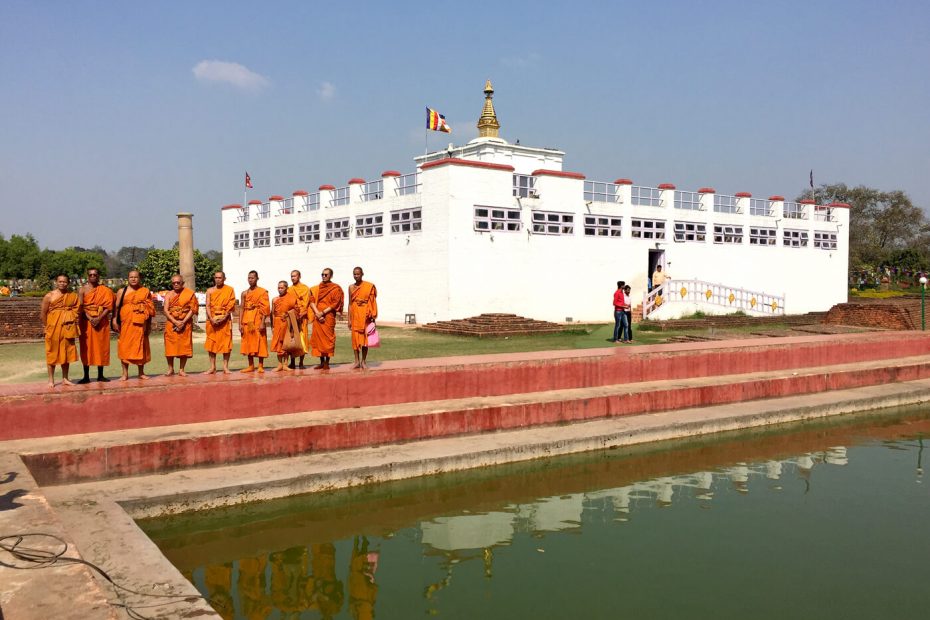The Birth Place of the Buddha
The Buddha – Siddhartha Gautam was born into the Shakya royal family in Lumbini in south Nepal. Using historical records referring to Alexander the Great and Emperor Ashoka, the Buddha’s birth date is usually given as May 563 BC.
His mother, Queen Maya Devi was on her way to her parent’s home at Rangram for the birth as was the tradition at that time. Before reaching her destination, she went into labour at Lumbini. There, she bathed in a bricked pool called Puskarni and then walked 25 paces to deliver the baby. The Buddha was born as she leant against a sal tree. He is said to have emerged from her right side and taken seven steps in the four directions; as he walked, lotus flowers bloomed. Sadly, Maya Devi died seven days after his birth and he was brought up by her younger sister and the second wife of Suddhodan, Pajapati.
The central focus at Lumbini is the Maya Devi temple. A stone relief (probably 2nd century AD) shows her giving birth to the Buddha watched by the two Hindu gods Brahma and Indra. The area is currently being developed into a Sacred Peace Garden spread over 8 sq. km. along with the building of several stupas and monasteries by Buddhist traditions from all over the world. The Ashokan Pillar stands out quite clearly and is surrounded by the ruins of four stupas.
In 1995, an international team uncovered a commemorative stone resting on top of a platform of bricks under the Maya Devi temple. The stone dates back to the time of the Emperor Ashoka who visited Lumbini is 249 BC. Ancient Buddhist texts which describe the place of his birth as being 25 paces from the pool where his mother bathed have been validated by this discovery.
There has been much dispute over the years as to the exact location of the Buddha’s birthplace; even treated as an issue of national pride between India and Nepal. Chinese pilgrim Huian Tsang in AD 636 described the place thus “where the lord was born is a piece of heaven on earth and one could see the snowy mountains amidst a splendid garden – embedded with stupas and monasteries”. He also noted a stone pillar broken in two surrounded by four stupas.
At Lumbini in 1896, Dr Fuhrer re-discovered the stone pillar erected as a mark of respect by Ashoka, the Indian Emperor and a follower of the Buddha’s teaching. The pillar is inscribed “Twenty years after his coronation, King Devanampiya Piyadasi (Ashoka) came here and paid homage, because the Buddha, the sage of the Shakya clan, was born here. He ordered a stone relief to be made and a stone pillar to be erected, to indicate that the Blessed One was born here. He exempted the village of Lumbini from taxes and reduced its toll of produce (from the usual quarter) to one eighth.” The inscription was made in the local dialect Magadhi, using Brahmin script.
Tilaurakot

Nearby is Kapilvastu now called Tilaurakot where the young prince spent his youth. Dr Fuhrer identified Kapilvastu from the writings of another Chinese Buddhist pilgrim, Fahien (c 400 AD) who had also visited the area. Archaeologists have discovered 13 successive layers of human habitation dating back to the 8th century BC. The eastern gate of the palace is where Buddha left the palace on his search for enlightenment.
Several other places around Lumbini are significant archaeological sites including Niglihawa and Gotihawa and both have pillars erected by the Emperor Ashoka on his pilgrimage to the area.
